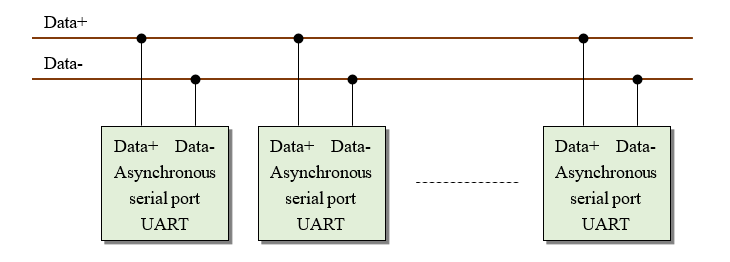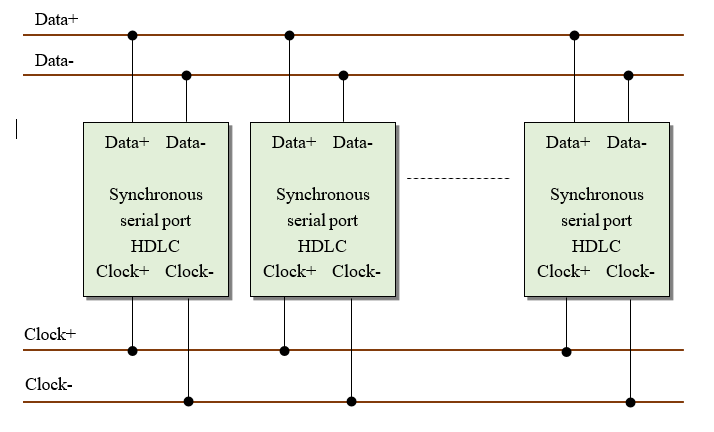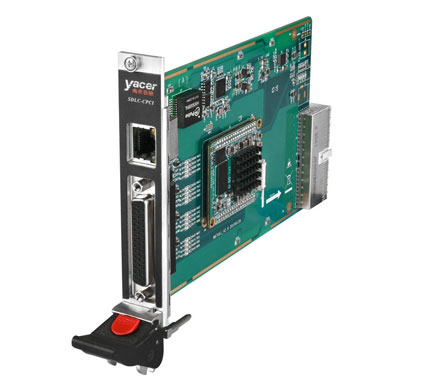1 Asynchronous serial communication based on RS-485
With conventional RS-485 asynchronous communication, the bus is a pair of data differential lines.

2 HDLC synchronous communication with clock signal based on RS-485
Because HDLC is synchronous communication, there must be a clock signal to maintain the synchronization of data bits, so the bus is composed of two pairs of differential lines, namely data bus and clock bus.
When sending, the clock signal and data signal are output at the same time. The node switches to the receiving state when the transmission is completed, and the clock and data stop sending.

3 HDLC synchronous communication with no clock signal based on RS-485
In some HDLC synchronous communication applications, the system can only provide a pair of data differential lines. This requires data signals to use coding formats that carry clock information, such as NRZI, Manchester coding, etc.
The typical application is the train TCMS application, which uses NRZI coding and a pair of data differential lines as RS-485 bus. Under the condition that all nodes on the bus agree on a same baud rate, the reliability of HDLC communication can be ensured.






